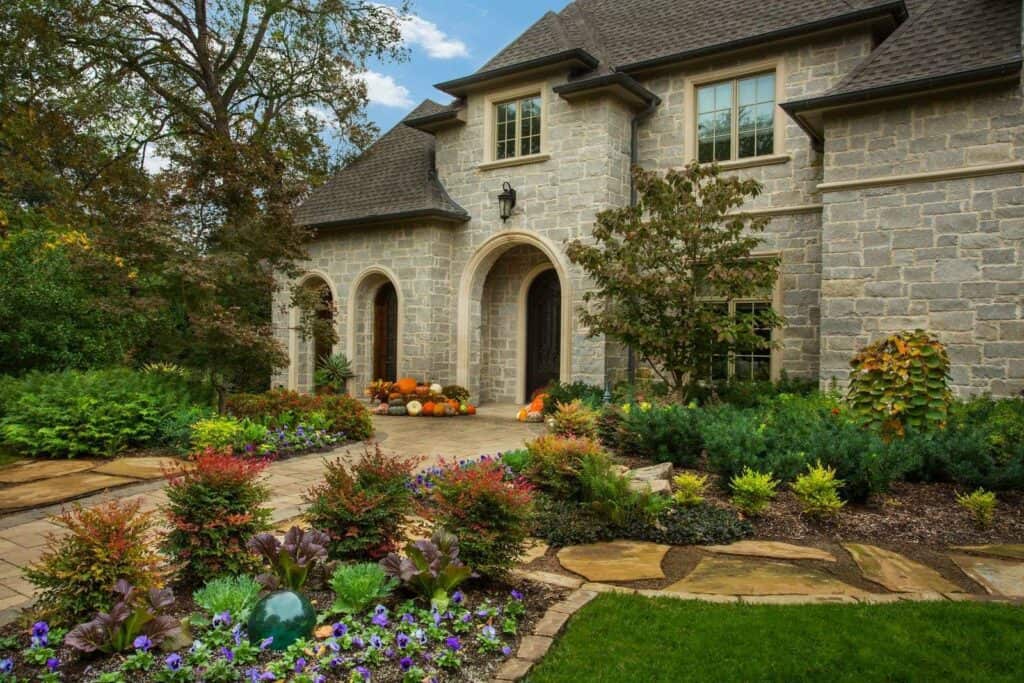Unknown Facts About Landscape Design
Table of ContentsNot known Facts About Landscape DesignFacts About Landscape Design RevealedThe Single Strategy To Use For Landscape DesignThe 6-Second Trick For Landscape DesignThe Ultimate Guide To Landscape Design
Formal style theme. Credit: Gail Hansen, UF/IFAS The yard is an expansion of the home where a range of tasks occur. A backyard can generally be split right into 3 locations: public (the front backyard), private (the backyard), and solution (generally the side lawn). The place of task areas depends largely on the type of area, the dimension of space required, the sort of activity, and the desired closeness to various other tasks and structures.The outside wall of your house commonly functions as the initial wall or starting point of an outdoor area. Incompatible usages must be divided, and relevant tasks, such as food preparation and dining, need to be put with each other to make the lawn much more reliable and pleasurable. When utilizing hardscape to create areas, utilize construction product similar to that used in your house for connection from your home into the garden.
Linked areas. Credit: Gail Hansen, UF/IFAS Making use of similar hardscape attributes and repeating plants pulls the eye around the garden.
Examine This Report on Landscape Design

For emotional convenience plants are used as physical or suggested obstacles for privacy and security. Physical barriers obstruct both the view and access to an area and consist of fences, walls and plant hedges.
Physical and suggested barriers. Credit Report: Gail Hansen, UF/IFAS For these reasons, the kinds of plants to be used (such as trees, hedges, or groundcovers) need to be chosen in the early phases of planning (Landscape Design). Plant types are chosen for their practical capacities to make sure that their future objective and required space can be thought about at the very same time

Landscape Design Fundamentals Explained
Each plant mass is in front of, behind, or alongside, one more mass. Number 11. Horizontal plant layers. Credit History: Gail Hansen, UF/IFAS Figure 12. Upright plant layers. Landscape Design. Credit Report: Gail Hansen, UF/IFAS Repeating plants within a mass and duplicating masses with comparable plants ties the yard with each other. The specific plant features have to be taken into consideration to successfully layer and mass plants.
All plant make-ups begin with the you can try here main framework plants, the large, primarily evergreen background plants-such as the trees and large hedges. These plants separate or enframe spaces, manage the size of the room, and go to these guys offer the starting point for selecting the proper attributes of the 2nd layer, midground plants, for massing and infill.
Crucial factors in the garden should be highlighted by the use of special plants, distinct structures, or yard accessories. Marking thresholds or entrances to areas can be finished with entrances, arbors, and actions, or with using unique and vivid plants. The type and/or design motif of the garden will often help identify the crucial factors and just how they ought to be highlighted.
Various other important areas in the backyard are focal factors, which is utilized to aesthetically arrange a designed area. Different viewpoints or perspectives can disclose different structures in the landscape that may call for a selection of focal points.
Unknown Facts About Landscape Design
Number 13. Plant forms. Credit Rating: Gail Hansen, UF/IFAS After form, structure is the next dominant feature of a plant; rugged, medium and fine appearances can be made use of for comparison and focus in the landscape. Type and texture both trump color in the garden for the majority of the year. During certain seasons, shade will certainly be the most visible quality of the garden.
The positive aroma of plants, the sound of wind in the trees, the noise and appearance of water, and the shades and appearances of sculptures, pots and yard furnishings all add to the experience of the yard. One detail that is commonly overlooked is the result of light on the aesthetic appeals of the plants.

The Buzz on Landscape Design
It is essential to understand the eventual mature dimension of plants so they can be put in the right area and spaced correctly when they are set up. Offering plants room to grow is a challenge since the common mature dimension is generally based upon optimal growing conditions and the environmental problems of a website might cause a plant to enlarge or remain smaller.
Comments on “How Landscape Design can Save You Time, Stress, and Money.”